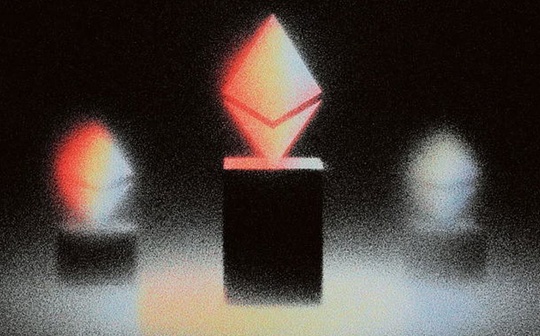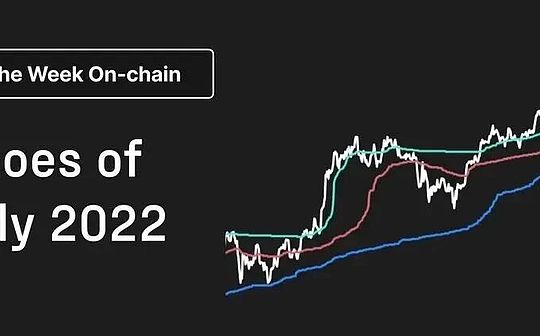
Source: Blockchain
Last year, due to the heat of the inscription, everyone began to transfer attention from Ethereum to Bitcoin, especially institutions, and began to smash money to lay out the Bitcoin ecological infrastructure. Recently, BEVM and BOB and other bitcoin layer2 have completed less than millions of millions., As many as tens of millions of financing, coupled with recent NERVOS’s RGB ++ launch and SEAL casting, making Bitcoin Layer2 CKB (CKB, translated public knowledge base, is the first network of NERVOS Network, responsible for storing all transactions of all transactionsData and smart contracts) heat soared.
Today, let’s understand the related content of Bitcoin Layer2.At present, there are many Bitcoin Layer2 on the market. We simply divide them into four categories, namely Bitcoin side chain, UTXO+client verification, Rouldp, and Taproot Consensus.The first two categories.
01The goal of Bitcoin layer2
Bitcoin is the leader of Crypto. Holding Bitcoin, after a round of market, you can win 95%of the assets, but everyone is still not satisfied with the status quo and hopes to give Bitcoin more things.Compared with other public chains, Bitcoin has slow transaction speed, long confirmation time, expensive transaction fees when congestion, and limited smart contract functions, and cannot directly build complex applications.
Bitcoin Layer2 is an additional level built on Bitcoin on the Bitcoin. The purpose is to increase transaction speed, reduce transaction costs, and increase scalability.It achieves these goals by processing transactions and preservation of the intermediate state under the chain.This can speed up transaction confirmation, reduce transaction fees, and increase the capacity and throughput of the entire system.Layer2 aims to improve the performance of Bitcoin and make it more suitable for widespread application.
02Bitcoin side chain
The Bitcoin side chain is an independent blockchain system connected to the Bitcoin main chain. Generally, it is an independent blockchain connected to the main chain through a two -way cross -chain bridge.It allows users to lock Bitcoin on the main chain, and then conduct transactions and operations on the side chain.
Through the side, users can achieve more flexible and diversified functions, such as supporting other encrypted asset payment, state -state smart contracts, faster settlement and higher privacy.However, because the side chain needs a set of independent verification nodes, the side chain needs to verify the transaction itself, and it will face issues related to excessive nodes, centralization, and inability to inherit the security of Bitcoin.Here are some side chain representative projects:
Stacks
Stacks is positioned as a smart contract layer of Bitcoin, which aims to introduce smart contracts and DAPPs for the Bitcoin system. Through the unique Proof of Transfer (POX) consensus mechanism, it connects itself to the Bitcoin’s main chain.Stacks allows developers to build smart contracts and DAPPs.In the technical architecture of Stacks, there are core layers and subnets to choose from.The core layer has a high degree of decentralization, but the throughput is low; the subnet has a low degree of decentralization, but it can achieve higher throughput.
Stacks uses Clarity smart contract language to create DAPP,For NAKAMOTO upgrades to improve network performance, the Nakamoto upgrade allows Stacks not only to settle Bitcoin transactions, but also achieve 100%Bitcoin reorganization resistance and speed up the block speed.Issuing SBTC -based stablecoins increases the combined characteristics of DEFI.Stacks aims to achieve high decentralization and scalability, and bring smart contract functions and DAPP capabilities to the Bitcoin system.
Stacks has now developed for 5 years, but most projects have responded flat or stagnant.Stacks’s Nakamoto upgrade has been developed for a long time, and it is expected to be launched on the main network at the end of the month.The Token STX is currently counted as the Bitcoin Layer2 leader with a market value of nearly $ 5 billion.
RSK
The positioning of RSK (RootStock) is Bitcoin Layer2 that supports smart contracts and focuses on DEFI.RSK does not have native Token, and introduces RBTC as a payment transaction fee. The goal is to become the cornerstone of financial inclusiveness.
RSK uses the production block, that is, the Bitcoin block producers mining Bitcoin and RSK blocks at the same time, in order to use Bitcoin’s security to protect smart contracts and transactions.It is compatible with the Ethereum virtual machine (EVM). Developers can use Solidity to write smart contracts and transplant the DAPP of Ethereum to RSK.In addition, RSK has also established a RIF network to provide various infrastructure services, such as DEFI, storage, domain name services and payment solutions to meet the needs of users.
At present, except for RIF, there is no other ecological projects, and the performance is weak. RSK launched the third batch of funding plans last month, with a total amount of 2.5 million US dollars.
Liquid network
Liquid is a Bitcoin side chain and trading settlement network launched by Blockstream.Its goal is to provide functions such as fast settlement, strong privacy, and digital asset distribution. The service object is institutional and asset issuers, providing asset issuance and circulation services based on Bitcoin side chain to promote faster Bitcoin transactions andDigital asset Token.Liquid focuses on simple agreements, security and privacy.LIquid is similar to the RSK mentioned above that it depends on the multi -signature of the alliance to publish an anchor token, but the degree of decentralization is different.In addition, liquid pays more attention to security, while RSK pays more attention to availability.
Liquid is considered to beAlliance chainIn addition, it is mainly used for asset issuance and transactions, and is not friendly to smart contract functions.
Lightning network
Lightning network is an extension solution based on the Bitcoin network, which aims to increase the speed of Bitcoin transactions, but its network does not support smart contracts.It achieves fast and cheap small payment by introducing the second -level payment channel.In the Lightning Network, participants can open a special payment channel that can conduct multiple transactions inside the channel without having to record each transaction on the Bitcoin blockchain.Only when the channel is closed can the final transaction result be submitted to the Bitcoin main chain for settlement.
Through the Lightning Network, users can realize almost instant payment without waiting for the confirmation of the Bitcoin main chain.This can greatly increase the speed of transactions and reduce transaction costs.Lightning network uses intelligent contract technology and multiple signature mechanisms to ensure the security of transaction among participants.
The application scenarios of Lightning Network include small payment and games.Provide users with convenient, fast, and low -cost payment methods, and also provides developers with platforms that build Lightning Network -based applications.
On April 3rd, Coinbase collaborated with LightSpark with Lightning Network Payment Solution to integrate Bitcoin Lightning Network for all its customers.At present, the US dollar capacity in the Lightning Network Payment Channel is nearly 320 million US dollars.
Looking at it as a whole, the second floor of the Bitcoin side chain is some “old” projects. Although it has been done for a long time, the actual progress is actually poor and unsatisfactory.Essence
03UTXO+client verification
UTXO+Client Verification is an expansion solution for Bitcoin UTXO account model(UTXO: Unspent Transaction Output, translated as “unprecedented transaction output”, can be simply understood as the receipt that has not been used).The authenticity of the ledger.The goal of this solution is to retain the original characteristics of Bitcoin, but also to achieve the sharing and security of the second -level ledger.
But in fact, the implementation of this plan is very difficult.Because the design of Bitcoin does not support complex calculations, additional tasks have become very complicated to the UTXO model.This plan emphasizes the native nature of Bitcoin, but it may ignore the difficulty of feasibility and practical operations.
At present, most of the projects in the track are still in the white paper stage, and it has not made much progress.The following is a representative project:
RGB
RGB is a Bitcoin Layer2 solution designed to build a Bitcoin UTXO model and lightning network.Its goal is to compress the data into each UTXO of Bitcoin and ensure the safety of assets through client verificationEssence
RGB’s design idea is to bind RGB transactions outside the chain with UTXO of Bitcoin transactions.It combines RGB’s asset ownership and status with the UTXO of Bitcoin by the proof of RGB transactions in the UTXO of Bitcoin.However, the development of RGB is relatively slow, because multiple technical points involved in it are difficult to achieve.Although RGB is considered an orthodox solution, its difficulty and functional restrictions have made their development progress slowly.
RGB ++
The RGB ++ protocol is a protocol inspired by the RGB protocol at the beginning of the year of the NERVOS joint year.Its main idea is similar to RGB. By calculating, executing and verifying transactions under the chain, and then settlement on the Bitcoin chain.The difference is that RGB ++ has adopted different ideas in the verification links of transactions and assets.
NERVOS uses the same POW+UTXO structure advantage as Bitcoin, and combines innovative “homogeneous mapping” technology,The client verification of the RGB protocol is successfully replaced on the CKB. In this way, while NERVOS maintains the same security as the Bitcoin, it has realized the function and flexibility of the RGB protocol.This migration does not sacrifice too much privacy, and at the same time provides users with more ways to use and manage digital assets.RGB ++ can obtain Turing’s complete smart contract execution capabilities while reusing Bitcoin security.
In this way, CKB becomes the execution layer and DA data layer of RGB ++ assets, but it can not only support the RGB ++ protocol, but also support other bitcoin assetsFor example, Runes and Atomical can be supported as long as they are based on UTXO bookkeeping models.
Recently, CKB has a high popularity. Here we also briefly introduce UTXO Stack. Developed by a company hatched by the NERVOS Ecological Fund. UTXO Stack is a Bitcoin Layer2 distribution platform based on UTXO model. It aims to help developers quickly build Bitcoin based on UTXO architecture.Layer2 chain.It provides a modular toolkit that allows developers to easily build their own two -layer chain and integrate it into the NERVOS ecosystem.
UTXO Stack restores the RGB ++ protocol, while using CKB as the data availability layer to bring more application scenarios and development opportunities to the Bitcoin ecosystem.This architecture enables the RGB ++ protocol to cooperate with UTXO Stack to provide strong technical support for the development of the Bitcoin ecosystem.
Bitvm
Bitvm is the Bitcoin virtual machine concept solution proposed by the head of Zerosync project Robin Linus.It aims to enhance the programming of Bitcoin, enabling developers to run complex contracts on the Bitcoin network without having to change the basic rules and consensus mechanisms of Bitcoin, which is still at the theoretical stage.
BITVM provides a method of achieving complex contracts on the Bitcoin network, while maintaining the security and decentralization characteristics of Bitcoin.It provides developers with more programming capabilities and innovative space by introducing new virtual machine concepts and roles.In order to improve flexibility, BITVM needs to transfer most of the calculation process to the chain to complete, and only the relevant certification is on the chain.Its core idea is to abstract complicated intelligent contracts into fraud proof and execute these proofs on Bitcoin scripts.Users can initiate a report when there is a problem with asset transactions and verify the authenticity of the transaction through fraud.
At present, the actual feasibility and technical details of BITVM are still controversial, and further observation and research need to be observed.
04summary
The above is today’s content. Although everyone is optimistic about the next development of Bitcoin Layer2, the current old project in Bitcoin Layer2 is in a tepid state.Due to the complexity of the new project, most of them are in the white paper stage, and there is still some distance in the real landing.








